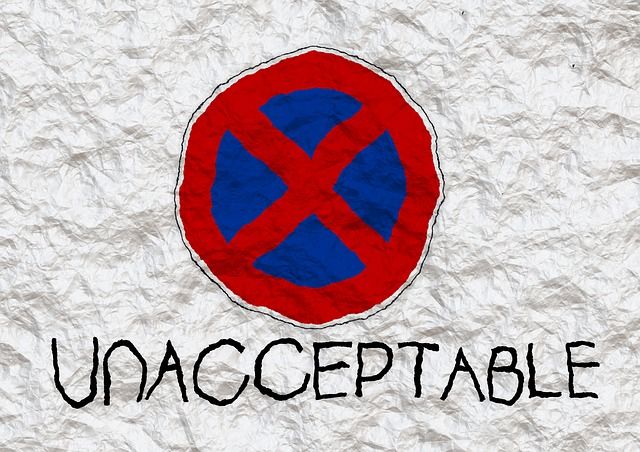Shockvertising is an area of marketing that provokes, inspires and shocks the public. These types of advertisements are often like bright spots in the gray marketing sky, filled with too many similar messages, fighting for still insufficient consumer attention. Thanks to shockvertising, advertisers hit the headlines, are on everyone's lips and gain invaluable publicity. These are benefits that cannot be obtained any other way. However, it is worth calculating the risk in advance.
Today's consumers are largely immune to "marketing gimmicks". Bombarded from all sides with new information, they stop paying attention to important things. That is why some companies and organizations try to focus attention on what they do through shockvertising. Some of these campaigns turn out to be successful, while others have met with considerable opposition from the public. It is much easier to cross the border in shock advertising - the conceptual possibilities here cover a much wider space than in the case of ordinary ads and they bind with very strong emotions.
Shockvertising, i.e. a provocation in advertising
Shockvertising, also known as shocking advertisement, uses taboos and social issues that people tend to ignore in order to deliberately gain wide public attention and generate a strong response. As a result of this type of advertising, the brand is more memorable. It usually does shocking the recipient, arousing controversy or anxiety. Given the emotions shockvertising is based on, it's no wonder that, on the one hand, shocking advertising can make a company a huge success. You have to bear in mind, however, that they may as well lead to terrible consequences. Therefore, an organization or company that employs these marketing tactics can gain a lot, but also risks his brand reputation. Shocking advertising campaigns must be well thought out and carried out especially in the digital agewhen content can go viral quickly.

Shocking advertising - the mechanism of action
Do you know the saying "measure twice, cut once"? It is worth remembering about it when planning shockvertising. Advertising almost always shocking memorable. However, its effectiveness depends on the brand's approach and how well the company understands its audience. If you are interested in using shock advertising tactics, prepare yourself properly before you act - learning from mistakes and successes of other companies.
One of the sectors where shocking advertising is often used to good effect is non-governmental organizations (NGOs). History shows that presenting a problem in a graphic or shocking way can lead people to reevaluate what they thought was the norm. In this way, a state of cognitive dissonance is created. What does it mean? Well, the recipients of such messages had certain beliefs about the world, but now they perceive it differently. It creates mental tension and the desire to get out of that state, and thus creates motivation to actthat would ease the tension. For many NGOs, this means people donating money to a charity or changing bad habits. With this in mind, the campaign "Do not abandon" of the Society for the Protection of Animals. Its aim was to reduce the number of animal abandonments during the holidays.
Today's consumers are largely immune to "marketing gimmicks".
Act effectively. Check how we can help you.
Shockvertising in Poland and in the world
Even if the goal is right, shock advertising may fail. An example is the 2008 campaign in a local Brazilian newspaper for the World Wildlife Fund (WWF). In the magazine there is a photo of an aerial shot of New York with a lot of planes in the sky "aimed" at the city. The photo was tagged with "the tsunami killed 100 times more people than on September 11." Unfortunately, although the idea was sublime - it was supposed to draw attention to the enormity of the tragedy, the campaign was not warmly welcomed.
As far as in this case, the shocking advertisement had attract people for a good cause, using it just to get attention, maybe create wrong associations and recall negative feelingswhich will of course transfer to your brand. This is exactly what happened to the Italian fashion designer. Sisley ran a series of commercials in China with the slogan "Fashion Junkie" which show models "hooking" clothes off the table. The women look completely intoxicated. For many audiences, however, comparing the addiction to buying clothes with addiction to cocaine, which is negative, was quite an abuse. The message of Tiger Energy Drink on our domestic market was also disapproved of, which you will read about later in the text.
How to prepare for a shocking campaign?
Regardless of whether you are planning a strictly shockvertising an advertising campaignor are you just going to start using something bolder, answer these three questions beforehand:
– what are your goals? If the reason you shockvertising is because you hope for a viral, think again. If your message, no matter if it's a movie, photo or text, spreads by thousands of people at the speed of light, you have no chance of pressing the delete button. Once set in motion, the machine will start to live its life, most likely without much control on your part. A bit like such a wild animal, so you should tame it first. That's why setting goals is so important. Shockvertising can help you arouse excitement to inspire people to act. It can also raise awareness around the charitable activities that your company is undertaking for a specific problem. Clearly specifying what your shockvertising campaign is for will make it geared towards achieving a specific goal.
– what studies preceded the campaign? You have to remember that shockvertising is sure to arouse emotions in your audience. With a high degree of probability, you can predict that it will not leave them indifferent to what you want to show them. The most important thing is that your strategy has the desired effect and does not discourage current, and probably future customers from your products or services. Play detective. Read what they write about Your audiencewhat conversations they have online about your brand issues. This will give you an insight into what could be harmful or what could be harmful attract positive attention. You can also conduct a survey on a selected group of your recipients and find out how they view your newest idea;

– what the potential consequences could be? Consider how many people were nodding their heads in disbelief when they saw Tiger Energy Drink advertising on August 1, 2017 with a graphic with an extended middle finger and the words "Screw what was. What is important is what will be. " Even more interesting is why nobody from Tiger's marketing team said it was a bad idea? It is hard to believe that none of the people involved in the campaign realized the consequences of this advertisement. In his apology, Tiger announced that a similar situation would not happen again. The bad taste, however, remained. The Warsaw Uprising Museum showed a sharp response to the entire action. On Twitter, they wrote: “Hey @tigerdrinkpl! We are about to start signing up for museum lessons (different levels, even for primary school children). Why don't you come over? ”.
Can a shocking advertisement shock too much?
In the case of the Tiger ad, something clearly went wrong. Perhaps they did not estimate the consequences. To avoid such a mistake, it is worth taking the time to carefully evaluate any potential misinterpretations or the consequences of the campaign. Only careful analysis allows you to decide if the game is worth the candle. Will the shockvertising be too disturbing or offensive in this case? Will your recipients be open to what you want to serve them? Ask others - in the company, friends or family what they think about the idea. Thanks to the new perspectives, you will be able to look at the idea differently.
I must admit that today the market is more difficult than ever. Competition to grab consumer attention is fierce and brands need to implement new strategies. Sometimes, however, this will to stand out can be too great and the shockvertising too shocking or provocative. So remember to evaluate the consequences of your actions in advance so that you don't have to send an apology either repair the damagethat could prove deadly to your brand.

